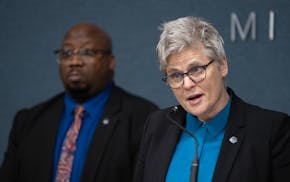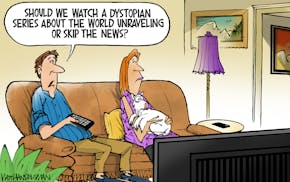Opinion editor's note: Star Tribune Opinion publishes a mix of national and local commentaries online and in print each day. (To contribute, click here.) This commentary is included among a collection of articles that were submitted in response to, or are otherwise applicable to, Star Tribune Opinion's June 4 call for submissions on the question: "Where does Minnesota go from here?" Read the full collection of responses here.
•••
Soon, billions of Minnesota taxpayer dollars will be distributed across a wide range of sectors, casting an incredible, often short-term, net of influence and impact across our state. As the leader of our state's largest community foundation, the close of Minnesota's 2023 legislative session has given me pause to consider the ways this impact might be better scaled and sustained.
Even as we take great strides to address challenges and opportunities, too often our greatest potential is underutilized and social benefits go unrealized because we fail to scale, fail to commit long term, and do not encourage creative partnerships that address the needs of all our communities.
However, I believe we can gain great advantage by tapping into the creativity and the drive for success that is endemic to Minnesota.
Minnesota is home to some of the most creative for-profits and not-for-profits in the nation. And in instances when we do realize our potential, we see amazing impact.
There are stories of service agencies, such as the Jeremiah Program, that take root in a single community and spread, first across the state, and then the nation.
We see the same capability from entrepreneurial startups across a range of sectors such as med tech, AI and consumer services.
We have no shortage of great ideas and innovative ways to meet high ideals, but at the state level we need a shift in thinking and better developed mechanisms to sustain an ecosystem that works for a longer term, sustainable, and multi-sector led vision.
Three strategies that I have heard from colleagues across the state include:
- Committing to long-term vs. episodic investment.
- Planful/intentional scaling of proven successes to similar communities across our state (recognizing that larger community and smaller community needs may be met in differing ways).
- Fostering vital partnerships that recognize many problems need to be addressed across a range of services and foci, including the for-profit and nonprofit sector (consider housing, food deserts, health care access, etc.).
A great example of how cross-sector partnerships can work is Partnership for a Connected MN, a collaboration among philanthropic and business leaders with support from Gov. Tim Walz. Connected MN was created to ensure that students have the resources they need to participate in digital learning in the wake of COVID-19, and the effort continues today.
Where do we go from here? State legislative committees working with state agencies must co-create a multiyear shared vision and measures of success for supporting the well-being and growth of our state. Also, financing practices, including reserves, must be committed to multiyear cycles of funding altered and expanded upon based on learning (proven models), outcome and scalability.
Finally, repeat in expanded contexts the lessons from diverse cross-sector ventures such as Connected MN, the Itasca Project and the Super Bowl host committee, convening leaders from government, industry and NGOs to create solution-focused and timelined approaches to address the needs of all our communities.
As individual entities, we can't do it all. But together, we have the strength to see that it all gets done.
Eric J. Jolly is president and CEO, St. Paul & Minnesota Foundation.

BWCA's future likely hinges on election
Saving the dinosaurs: Why there's a future for community newspapers
Readers Write: Gun storage laws, Uber and Lyft, 24/7 businesses, the pipe organ


